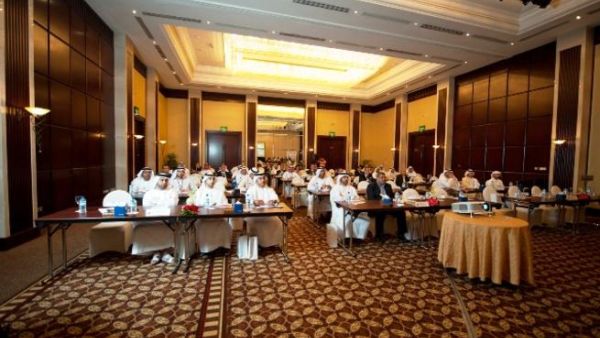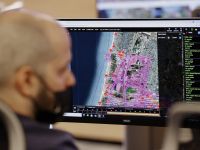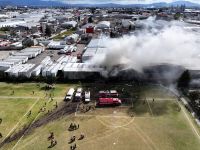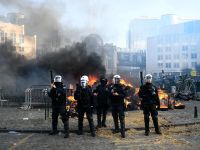Etihad Rail hosts two-day Sand Movement Mitigation Workshop

Etihad Rail – the master developer and operator of the UAE’s national railway – recently hosted a two-day workshop on sand movement mitigation. The sessions, hosted by Etihad Rail and presented by China Railway First Survey and Design Institute (FSDI), provided Etihad Rail and its partners and government stakeholders with insight into the best international practices on blown sand prevention and sand movement mitigation for roads and railways.
The interactive workshop gave Etihad Rail and the other UAE government stakeholders the opportunity to further enhance their understanding of the various complexities and technical needs involved in building railways and roads in such challenging terrain as dunes and desert. This insight comes at a particularly opportune time as Etihad Rail finalises its preparations to begin construction of the first stage of the network in the Emirate’s Western Region later this year.
With the participation of several key Etihad Rail partners and stakeholders such as the Civil Defense, Abu Dhabi Urban Planning Council (UPC), the Al Ain and Western Region Municipalities and the UAE Ministry of Environment & Water, as well as UAE University among many others, FSDI shared its expertise around main topics of interest including: blown sand movement patterns; prevention and control systems of sand hazards; topography and windblown sand mitigation measures for the UAE; and technical and geotechnical sand characteristics.
Commenting on the importance of the workshop, Faris Al Mazrouei, Project Manager for Stage One of the Etihad Rail network, said: “The workshop not only provided the team at Etihad Rail but also our key stakeholders with invaluable insight and knowledge on the development of roads and rail in terrain such as ours in the UAE. We are all delighted to be working with industry experts such as FSDI to proactively develop innovative and effective solutions to manage mitigating sand movement.
The knowledge gained from the workshop, along with our extensive planning of a railway matching UAE conditions over the past few years, well positions us to implement a railway that is built and maintained to the highest technical and safety standards. We are proud of our results thus far, and look forward to utilising fully these lessons with regards to the alignment, construction and operation of our railway and providing a safe, modern and efficient mode of transport for both freight and passengers in the UAE.”
In addition to assessing the challenges surrounding the movement of sand and dunes, Etihad Rail has already conducted several studies and surveys to date. These include a geotechnical survey for the entire Shah-Habshan-Ruwais route in the Western Region of the Abu Dhabi Emirate as well as a topographical survey for the route with aerial and ground surveys also complete. In addition, an Environmental Impact Assessment for the first stage has been completed and approved by the Environmental Agency-Abu Dhabi. When complete in 2017, the 1,200km railway network will span across the Emirates and form a vital part of the wider GCC Railway network.
Background Information
Etihad Rail
Etihad Rail was established in June 2009 under Federal Law no. 2, with a mandate to manage the development, construction and operation of the UAE’s national freight and passenger railway network.
The railway network will be built in phases to link the principal centres of population and industry of the UAE, as well as to form a vital part of the planned GCC railway network linking the six countries of the GCC: The Kingdom of Bahrain, The State of Kuwait, Oman, Qatar, The Kingdom of Saudi Arabia and UAE.Built to international standards, Etihad Rail’s state-of-the-art network will act as a catalyst for economic growth and sustained social development. Once complete, the railway will redefine logistics and transport in the region; thus providing a modern, safe, efficient and sustainable network which will connect the UAE and its regions to its neighbouring GCC countries.






